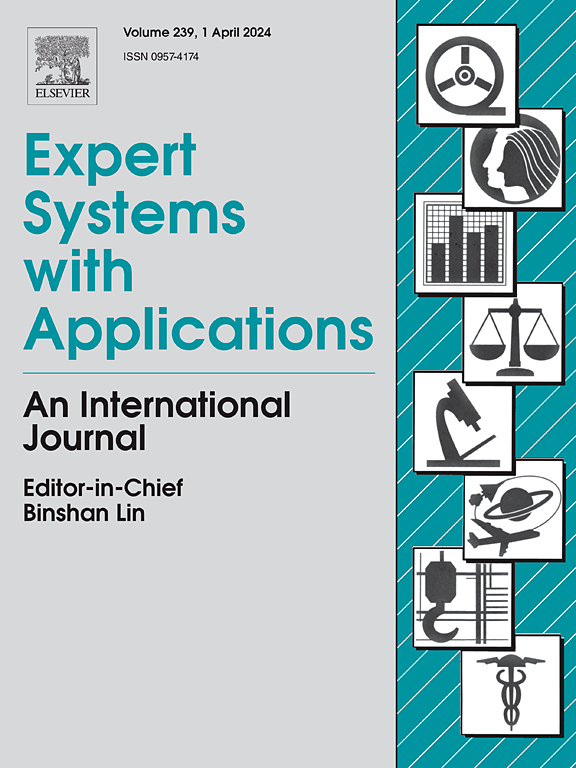基于共识的多学科团队会议决策方法
IF 7.5
1区 计算机科学
Q1 COMPUTER SCIENCE, ARTIFICIAL INTELLIGENCE
引用次数: 0
摘要
针对多病复杂的治疗过程和不断变化的医疗需求,多学科团队(MDT)致力于整合专家的诊断意见,提供最佳的治疗方案。疾病治疗方案共识的达成是一个动态迭代的群体决策过程,传统的MDT会议方法无法解决决策过程的规范化、信任关系的互动性、信息的模糊性等问题。鉴于这些挑战,本研究提出了一个基于q-rung正形模糊集(q-ROFS)的双路径反馈机制的动态共识框架。首先在MDT中建立了一个混合信任演化模型,其中信任程度由每轮的固有信任和偏好相似度组成。然后将意见动态模型引入到模糊环境中。基于信任演化和意见动态,采用双路径反馈机制为偏好调整和权重调整提供参考。相应地,提出了基于q-ROFS的共识测度、偏好相似性和备选选择的计算方法。最后,以血管MDT会议为例,说明了该方法的有效性。仿真实验验证了共识阈值、群体规模、个体自信和信任演化对所提方法的影响。对比分析结果表明,增加q值可以在保证共识水平的同时扩大模糊信息表达空间,所提方法在获得更高效、高质量的共识结果方面优于其他方法。本文章由计算机程序翻译,如有差异,请以英文原文为准。
A consensus-based group decision-making method for multidisciplinary team meeting under q-rung orthopair fuzzy environment
In response to the complex treatment process and evolving medical needs of multimorbidity, multidisciplinary team (MDT) is dedicated to integrating the diagnosis opinions of experts and providing optimal treatment plans. Reaching consensus on disease treatment plans involves a dynamic and iterative group decision-making process, in which traditional methods for MDT meetings fail to address the standardized decision-making procedure, interactive trust relationships, and fuzzy information integration. Given the challenges, this study proposes a dynamic consensus framework based on dual-path feedback mechanism with q-rung orthopair fuzzy set (q-ROFS). A hybrid trust evolution model is first established within MDT, in which the trust degree is composed of inherent trust and preference similarity in each round. Then the opinion dynamics model is also introduced to the fuzzy environment. Based on trust evolution and opinion dynamics, the dual-path feedback mechanism is employed to provide references for preference adjustment and weight adjustment. Correspondingly, the calculation methods for consensus measure, preference similarity and alternative selection with q-ROFS are proposed. Additionally, a case study about vascular MDT meeting is used to illustrate the effectiveness of the proposed method. The simulation experiments are performed to verify the impact of consensus threshold, group size, individual self-confidence, and trust evolution on the proposed method. The results of the comparative analysis show that increasing the q value can expand the fuzzy information expression space while ensuring the consensus level, and the proposed method is superior to other methods in terms of more efficient and high-quality consensus results.
求助全文
通过发布文献求助,成功后即可免费获取论文全文。
去求助
来源期刊

Expert Systems with Applications
工程技术-工程:电子与电气
CiteScore
13.80
自引率
10.60%
发文量
2045
审稿时长
8.7 months
期刊介绍:
Expert Systems With Applications is an international journal dedicated to the exchange of information on expert and intelligent systems used globally in industry, government, and universities. The journal emphasizes original papers covering the design, development, testing, implementation, and management of these systems, offering practical guidelines. It spans various sectors such as finance, engineering, marketing, law, project management, information management, medicine, and more. The journal also welcomes papers on multi-agent systems, knowledge management, neural networks, knowledge discovery, data mining, and other related areas, excluding applications to military/defense systems.
 求助内容:
求助内容: 应助结果提醒方式:
应助结果提醒方式:


